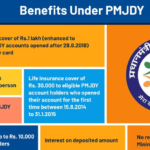Rajya Sabha by-polls: 12 Members Elected Unopposed

Recently Rajya Sabha by-polls were held. 12 members were elected unopposed.
LEARNING FROM HOME/WITHOUT CLASSES/BASICS
RAJYA SABHA
Under article 80 of the Constitution, the Council of States (Rajya Sabha) is composed of not more than 250 members, of whom 12 are nominated by the President of India from amongst persons who have special knowledge or practical experience in respect of such matters as literature, science, art, and social service.
The Fourth Schedule to the Constitution provides for the allocation of Rajya Sabha(RS) seats to the states and Union Territories, on the basis of the population of each state.
Nominated members enjoy all powers, privileges, and immunities available to an elected member of Parliament. They take part in the proceedings of the House as any other member. They, however, are not entitled to vote in the election of the President of India. But in the election of the Vice-President of India, they have a right to vote.
Qualifications
Article 84 of the Constitution lays down the qualifications for membership of Parliament. A person to be qualified for the membership of the RS should posses the following qualifications:
1. he must be a citizen of India
2. he must be not less than 30 years of age.
3. he must possess such other qualifications as may be prescribed under any law made by Parliament.
RS is a permanent House and is not subject to dissolution. However, one-third of the Members of Rajya Sabha retire after every second year. A member who is elected for a full term serves for six years.
RS MPs are elected by MLAs through an indirect election. Article 80(4) provides that members shall be elected by the elected members of state Assemblies through a system of proportional representation by means of a single transferable vote.
READ:






0 Comments